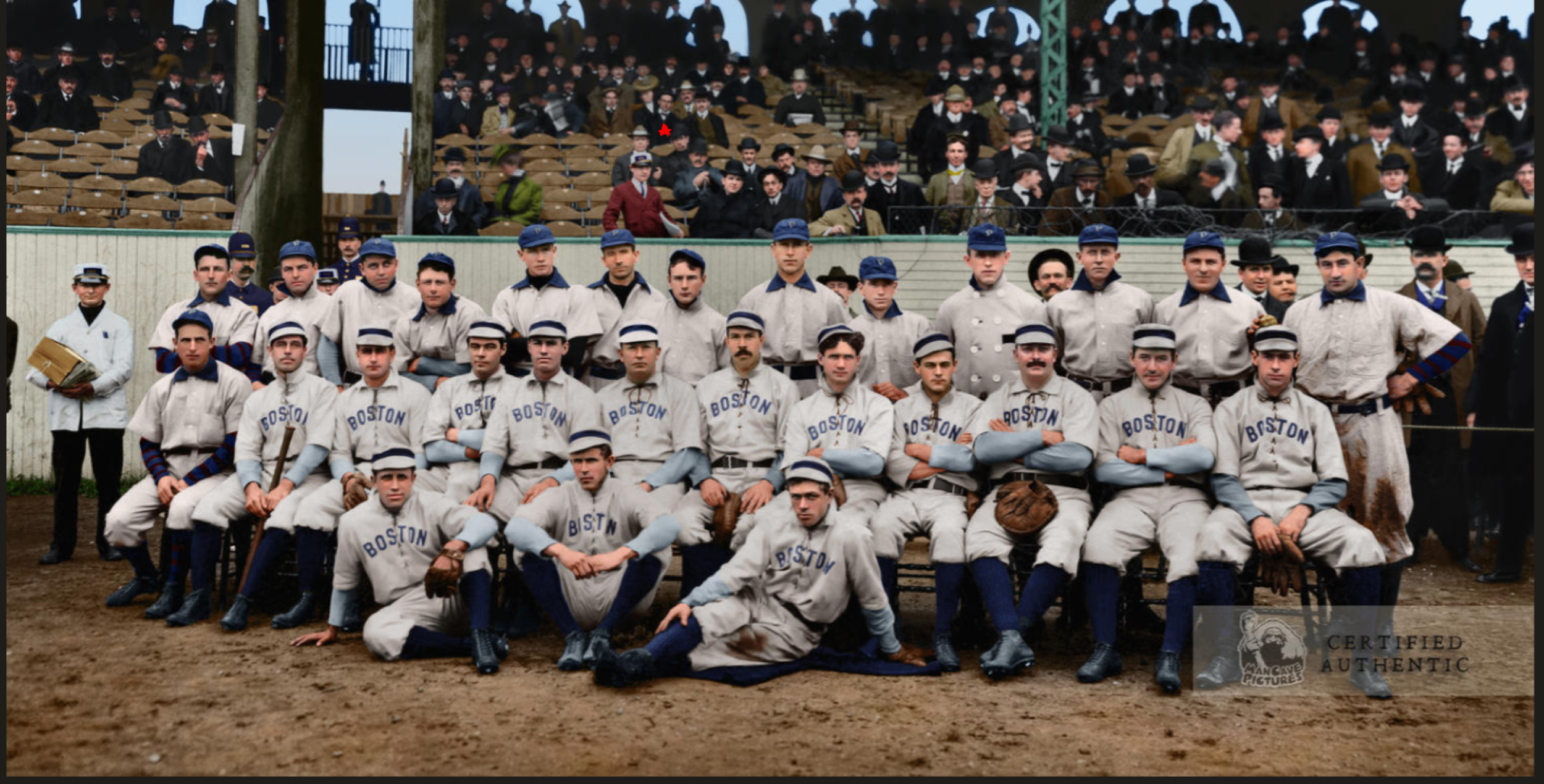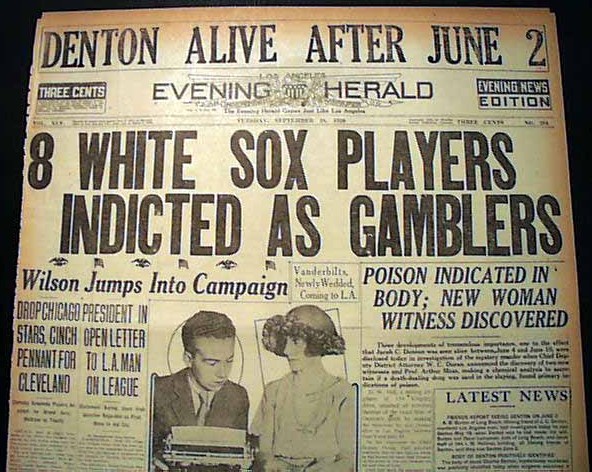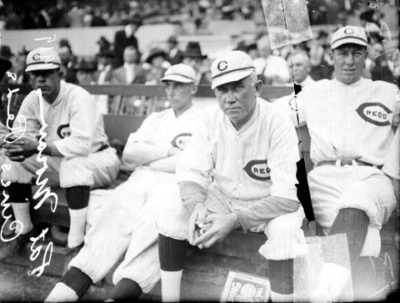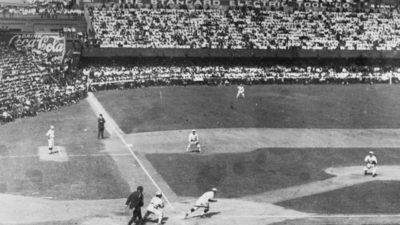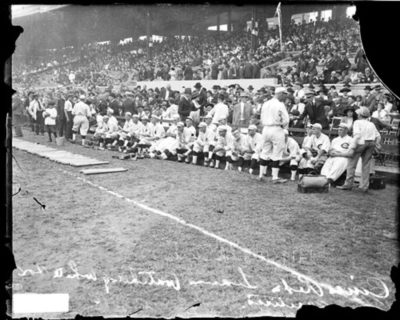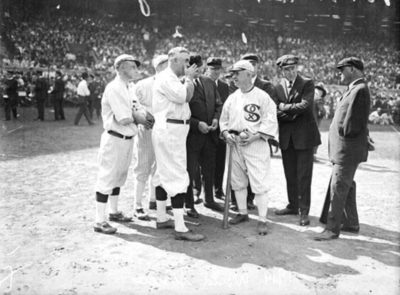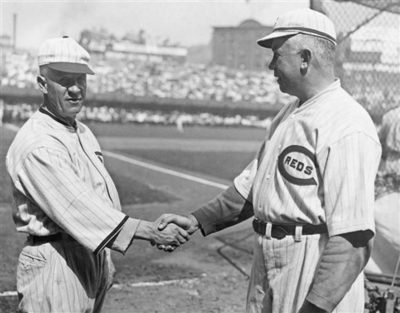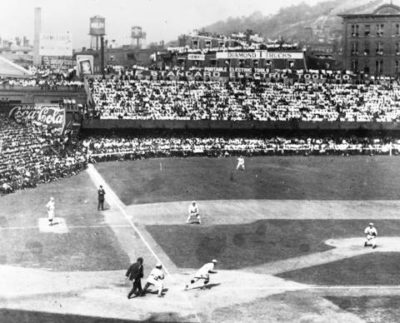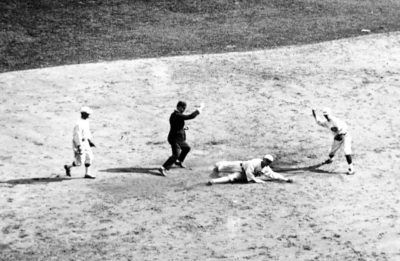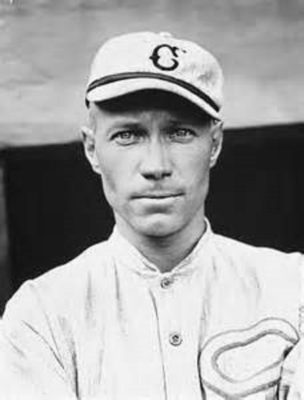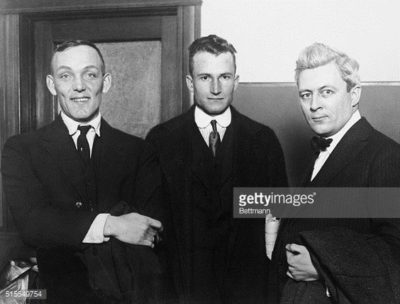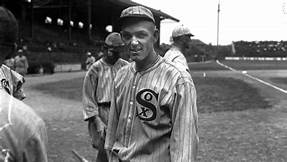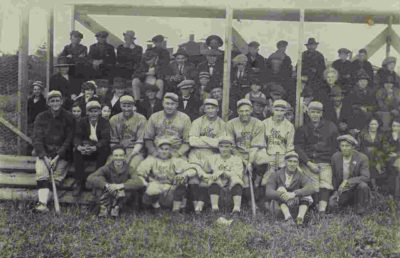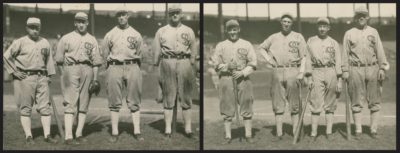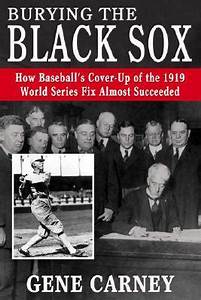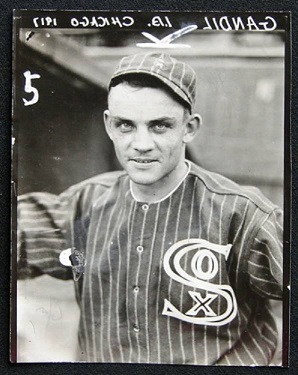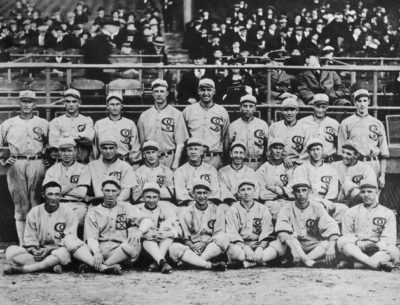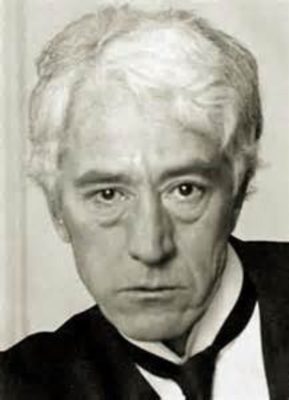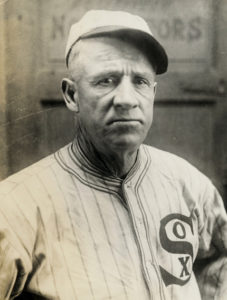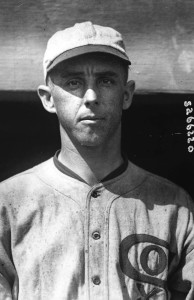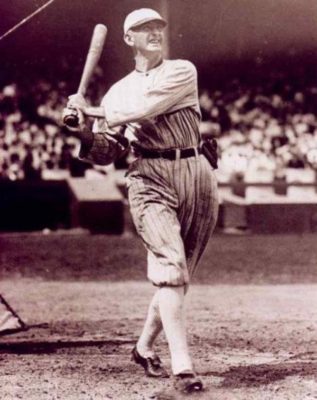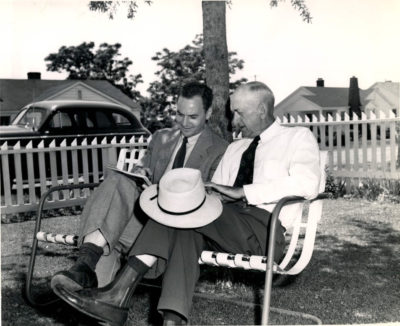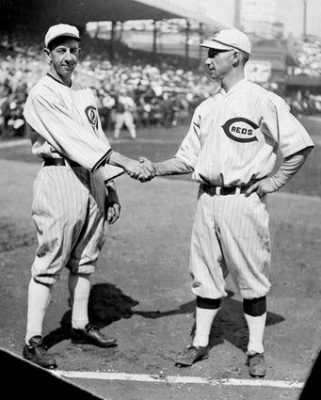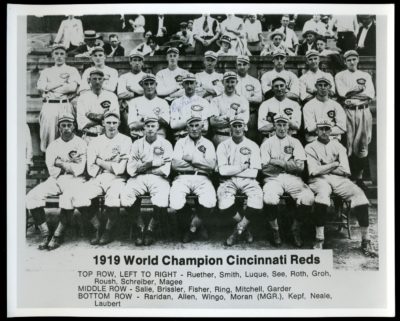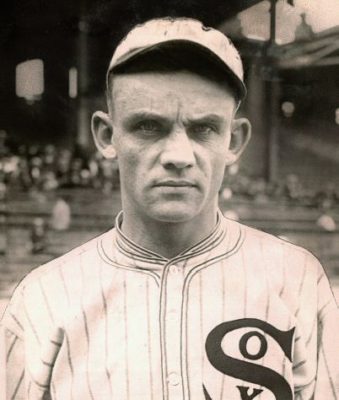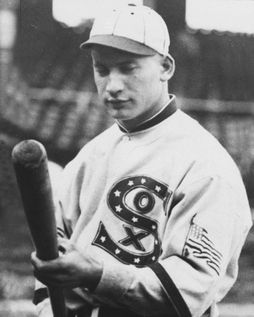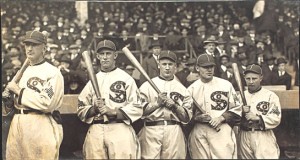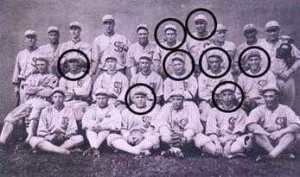Featured Photo Above:
Combined 1903 World Series Photo: Pittsburgh Pirates and Boston Pilgrims
(Color Restoration by Chris Whitehouse of Mancave Pictures)
Baseball History Comes Alive Now Ranked As a Top Five Website by Feedspot Among All Baseball History Websites and Blogs!
(Check out Feedspot's list of the Top 35 Baseball History websites and blogs)

Guest Submissions from Our Readers Always Welcome! Click for details
Subscribe to Old Baseball Photos and Essays for automatic updates (sign-up block found in right side-bar)
As a Free Bonus for subscribing, you’ll get instant access to my two Special Reports: Memorable World Series Moments and Gary’s Handy Dandy World Series Reference Guide!
1919 World Series Photo Gallery
Click on any image below to see photos in full size and to start Photo Gallery:
Another Look At the 1919 World Series:
The Eye-Witness Accounts
I’ve always found it interesting that many of the eyewitnesses to the 1919 World Series apparently saw something completely different than what has become accepted as the conventional wisdom.
To me, it just doesn’t all add up…
While there can be no doubt that the “Eight Men Out” conspired with gamblers and dirty money was given and accepted, do we know for certain that the Series was actually “thrown”? Some games? All games? None of us was there; so we have to rely on the recorded contemporary testimony of those who were. And many contemporary accounts paint a totally different picture. Can it be possible that there’s more to the story than meets the eye?
Eye-Witnesses Accounts
Official Scorer James C. Hamilton testified that he only saw one possible suspicious play in the entire Series (the Cicotte deflection in Game Four, which I’ll cover in another post). National League umpire Richard Nallin had “no suspicion whatever of any wrong-doing.” American League Umpire Billy Evans, a future Hall-of-Famer, likewise said, “Well, I guess I’m just a big dope. That series looked all right to me.”
Umpire Ernie Quigley was quoted as saying: “…I never saw a team try harder to win and they were beaten on the square by the superior strength of the Reds.” Quigley also mentioned two great plays by Roush and Morrie Rath: “But for these two plays the White Sox would have won at least two more games, which would have meant the series for them.”
Hmmm…Shouldn’t that last statement alone start us thinking? How does the “conventional wisdom” account for that?
How the Reds Viewed the Series
The Reds players, including Roush, Groh, Greasy Neale, Dutch Reuther, Hod Eller, Slim Sallee, Dolf Luque, Jake Daubert, Larry Kopf, Ivy Wingo, and owner Garry Hermann thought the Series was played on the level. Roush always remained doubtful that the Series was fixed and maintained the best team had won.
Reds manager Pat Moran was also skeptical: “If they threw some of the games they must be consummate actors, and their place is on the stage, for nothing in their playing gave us the impression they weren’t doing their best….It is astonishing to me that [they] could get away with that sort of thing and us not know it.”
Even “Clean Sox” Ray Schalk said that “Jackson and Cicotte gave their best all the way;” and Eddie Collins claimed he was “never suspicious of their actions during the Series.” Christy Mathewson, sitting with Hugh Fullerton looking for suspicious play, concluded it would be impossible to throw a World Series.
Sportswriters’ Accounts
Many of the sportswriters reached the same conclusion, including Sporting News and Baseball Magazine reporters. W.A. Phelan wrote that “…if ever a Series was played upon the level, this was one,” adding, “The Reds simply outclassed the overconfident White Sox.” Henry P. Edwards concurred: “[the notion that] the Sox were guilty of intentional bad play is something that cannot be swallowed,” as did James O’Leary: “If anybody was ‘fixed’ give us his name and the evidence showing that he was fixed, and who fixed him.”
Could all these eye-witnesses all have been fooled? These were not casual fans, but baseball lifers. And what about the many outstanding plays made by Jackson, Weaver, and Felsch; and the clutch hits by, of all players, Gandil? But for a few spectacular plays, most notably by the great center fielder Edd Roush, the entire Series may have had a different result.
Let’s Take Another Look
One hundred years later, is it still necessary for us to blindly accept the “conventional wisdom” without questioning it? Is it possible that the Black Sox – while certainly guilty of conspiring with gamblers and taking dirty money – didn’t really know what they had gotten themselves into by the time the Series started and didn’t know what to do? In light of the eyewitness testimony, isn’t that a question worthy of investigation?
This is not to exonerate the Black Sox by any means. It’s merely a suggestion that perhaps there’s more to the story than we’ve been led to believe. The prevailing version whitewashed the baseball establishment which had turned a blind eye to the gambling scandal eating away at the game.
I contend it’s entirely plausible that as the start of the Series approached, the thought of playing “crooked ball” was too much for at least some of them to handle. They were “big shots” who like to talk big. “Commy” was an easy target. Here was a chance to get back at that cheap bastard, a chance to really make some dough…
But when “push came to shove,” maybe they lost their nerve. Could remorse – or even panic – have set in? It wouldn’t be the first time. “Could we even get away with it?” some were asking Gandil.
The entire sordid episode was a blurred, surreal sequence of events where no one really knew what anyone else was doing. A few may have cracked under the intense mental anguish, as Chick Gandil implied in his 1956 interview.
Conflicting stories and emotions were rampant. Who was trying? Who wasn’t? Was it worth the risk? Was it too late to call it off? They took money. Now what? Was it too late to give it back? They made a “devil’s bargain” with the gamblers. What happens when you double-cross gamblers? All this and much, much more had to be tormenting them as the opening game of the 1919 World Series approached. Who could possibly concentrate on winning baseball? On a national stage, no less. And against a great team like the Reds.
The situation was ripe for an upset…
The Black Sox were an extraordinary mix of arrogance, stupidity, naivety, greed, and, yes, talent. Conspiring with gamblers to throw the World Series was a serious offense. They got what they deserved and they knew it. The acceptance of dirty money irreversibly tarnished their reputations and made their future protestations of innocence ring hollow. As with a tar baby, once they touched the gamblers, they could never break free. Their fate was sealed.
But what really happened?
It’s time to reexamine the events of the 1919 World Series with “pursuit of the truth” the only goal. Let the chips fall where they may.
Gary Livacari
Photo Credits: All from Google search
Check out my two books, both now available on Amazon in e-book and paperback: “Paul Pryor in His Own Words: The Life and TImes of a 20-Year Major League Umpire”and “Memorable World Series Moments.” All profits go to the Illinois Veterans Foundation
Cast Your Vote in Our New Poll Question: How Do You Feel About Judge Landis’ Verdict Against the “Eight Men Out”? https://wp.me/p7a04E-5IF
We are a participant in the Amazon Services LLC Associates Program, an affiliate advertising program designed to provide a means for us to earn fees by linking to Amazon.com and affiliated sites. Click here to view Amazon’s privacy policy
